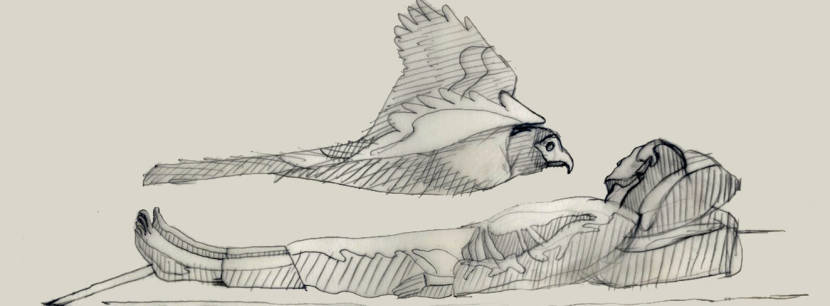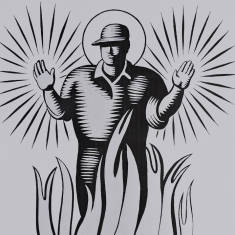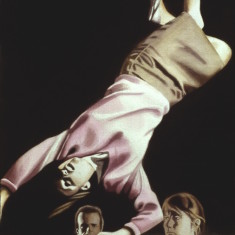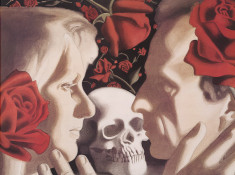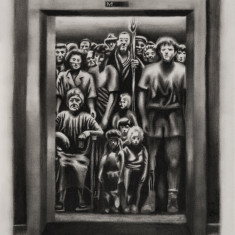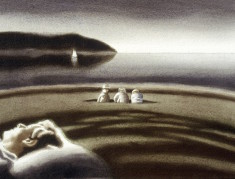Magic Realism
Documentary and storytelling, procedural and symbolic, fantasy and realism; these are alternating tendencies in Robert’s work. Robert grew up a few miles away from Canadian artist Alex Colville, to whom he is often compared. Robert’s art, like Colville’s, is part of a wider international movement of Magic Realism that combines the meticulous recording of everyday scenes with a strong sense of dislocation and juxtaposition. Robert makes four contributions to this movement: 1) In paintings usually noted for soft diffuse tones, Robert creates scenes that feature strong dramatic lighting, a mixture of film noir and Baroque influences; 2) Robert brings a connection to literature, particularly the literature of the Latin American school of Magical Realism, of Borges and Marquez, showing a hybrid society that is a paradoxical mixture of strong local culture, with lingering traces of a colonial past in collision with a modern present, and where the defiance of reality is as important as the straight recording of events; 3) Robert creates works in series, so that his procedural/ imaginative studies of love, cars and illness, become social panoramas that approach their subjects from many sides and suggest development, change and frequent altering of mood and thought; 4) Robert adds a key element of postmodernism that gives a political charge to his images: the telling of stories from a point of view that is neglected or under-valued by the mainstream. This is most prominent in the “Illness & Healing” series, which details all stages of illness and treatment for cancer from the patient’s point-of-view.
